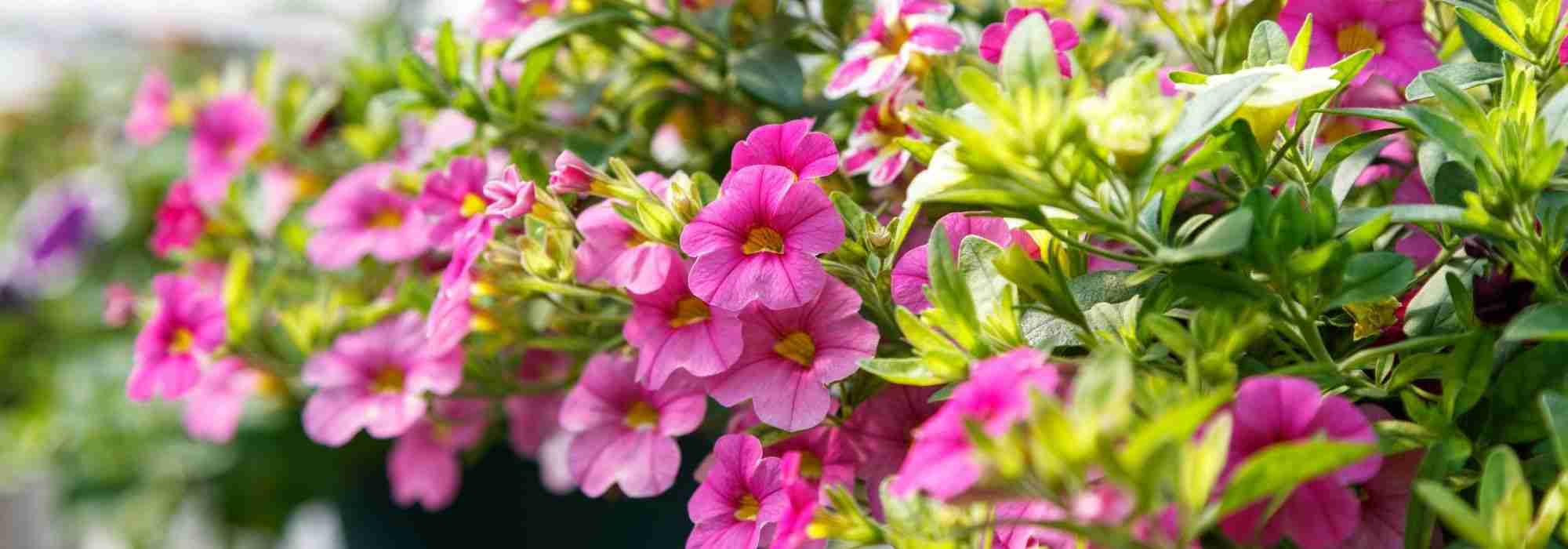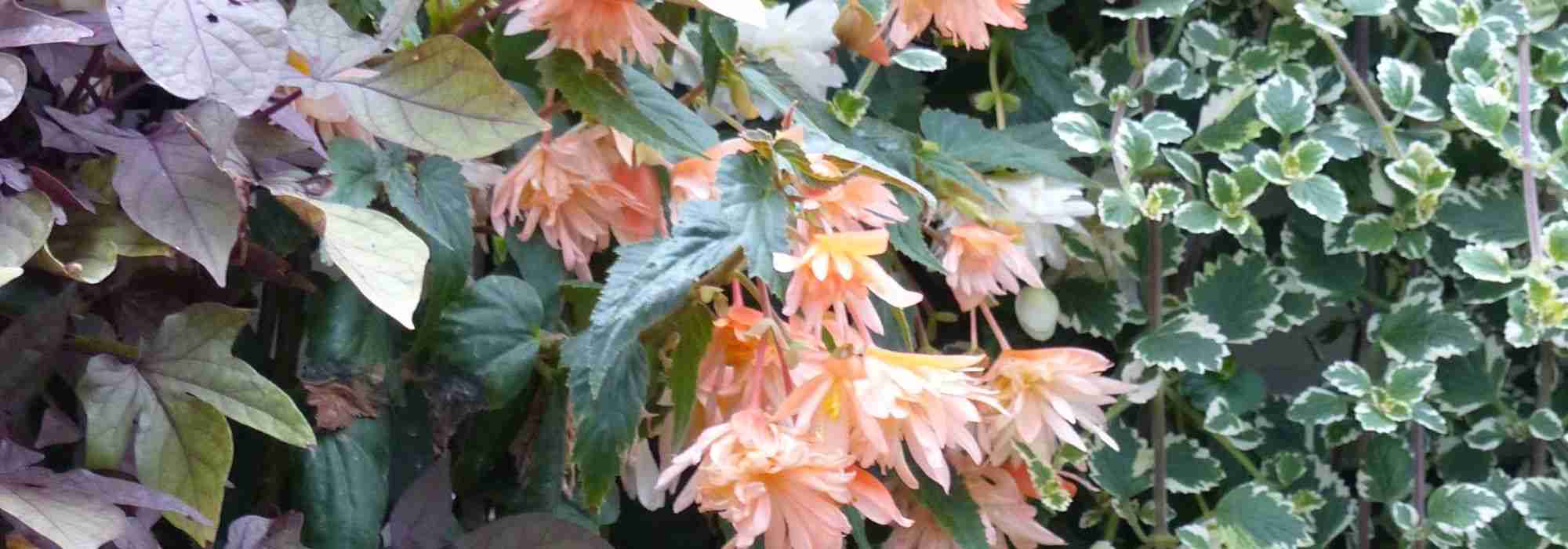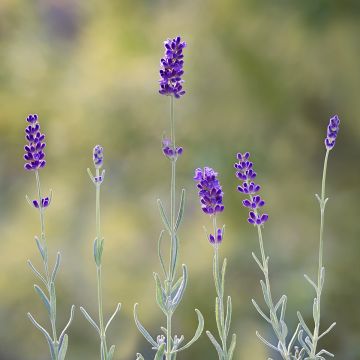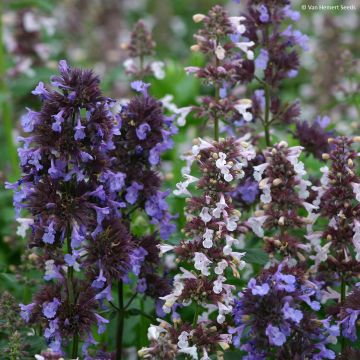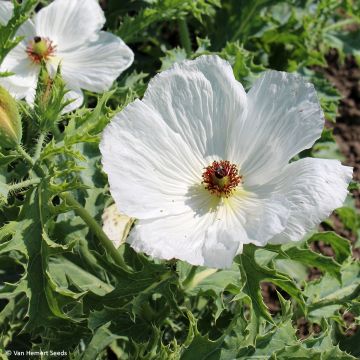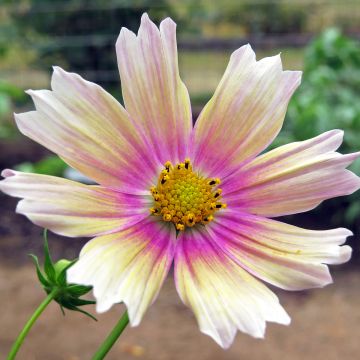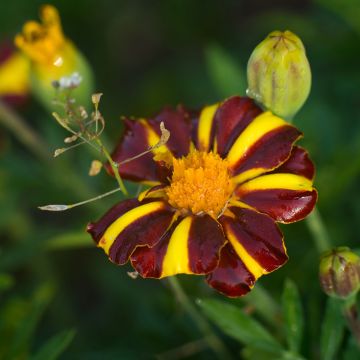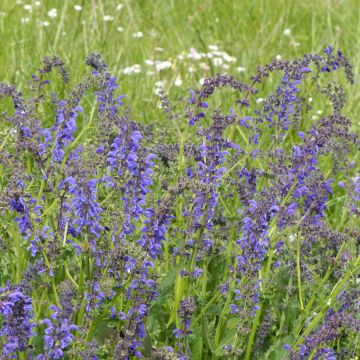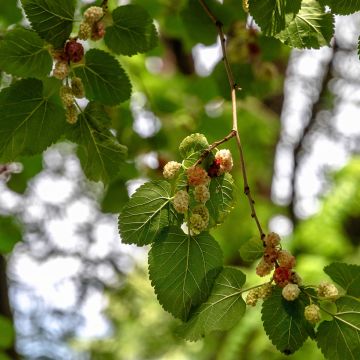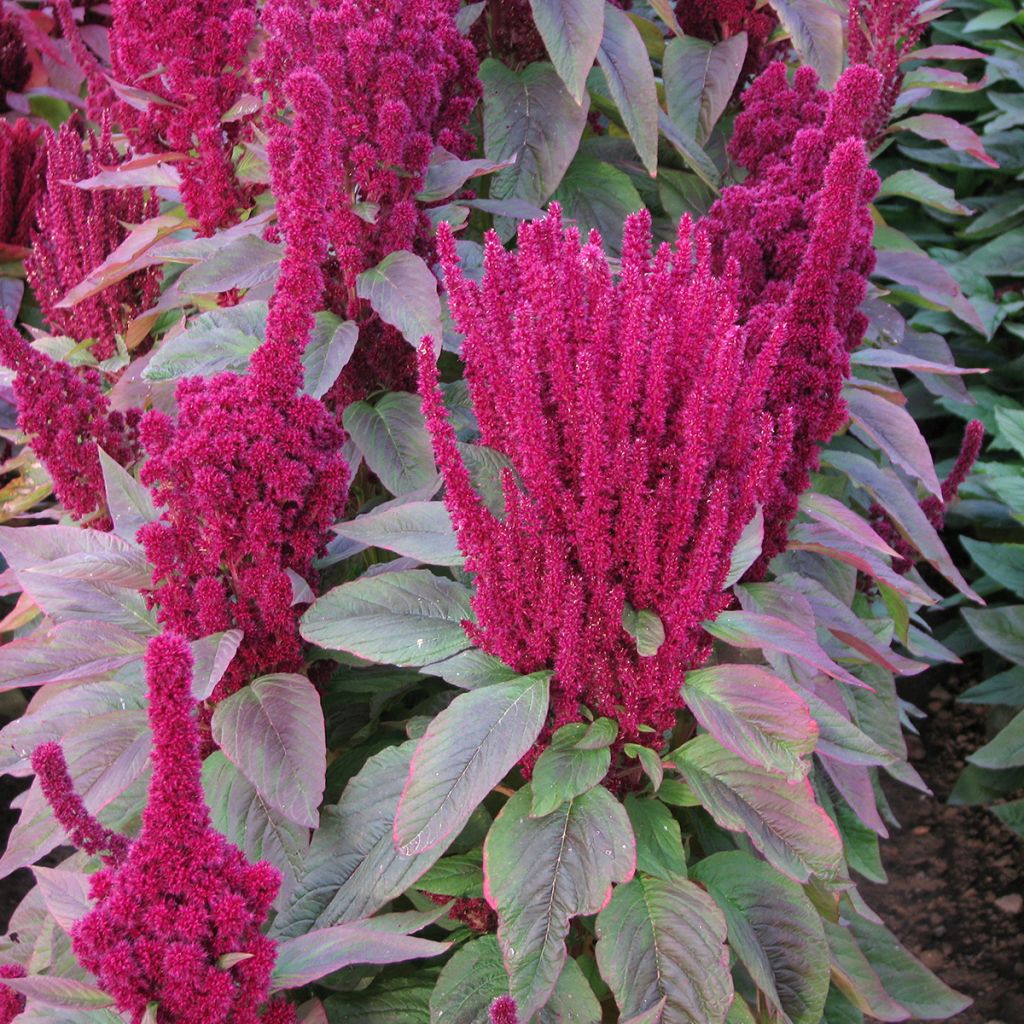

Amaranthus cruentus Red Cathedral seeds
Amaranthus cruentus Red Cathedral seeds
Amaranthus cruentus Red Cathedral (Dôme rouge)
Purple Amaranth, Prince's Feather
Special offer!
Receive a €20 voucher for any order over €90 (excluding delivery costs, credit notes, and plastic-free options)!
1- Add your favorite plants to your cart.
2- Once you have reached €90, confirm your order (you can even choose the delivery date!).
3- As soon as your order is shipped, you will receive an email containing your voucher code, valid for 3 months (90 days).
Your voucher is unique and can only be used once, for any order with a minimum value of €20, excluding delivery costs.
Can be combined with other current offers, non-divisible and non-refundable.
Home or relay delivery (depending on size and destination)
Schedule delivery date,
and select date in basket
This plant carries a 6 months recovery warranty
More information
We guarantee the quality of our plants for a full growing cycle, and will replace at our expense any plant that fails to recover under normal climatic and planting conditions.
Would this plant suit my garden?
Set up your Plantfit profile →
Description
Amaranthus cruentus ‘Red Cathedral’, also known as 'Red Dome', is a variety of annual amaranth remarkable for its upright inflorescences of intense crimson red. This firework-like flowering unfolds from summer until autumn. Amaranth thrives in warm climates, in well-drained soil, and adapts equally well to naturalistic gardens and more contemporary settings. Decorative in the ground or in a large pot, its flowers are magnificent in both fresh and dried bouquets.
Amaranthus cruentus ‘Red Cathedral’ belongs to the Amaranthaceae family. The species is an annual plant native to the tropical regions of Central and South America, where it is traditionally cultivated for its nutritious seeds. This plant follows a strictly annual growth cycle: it germinates in spring, flowers abundantly in summer, and sets seed at the end of the season, before disappearing completely with the first frosts.
The ‘Red Cathedral’ cultivar has a bushy, upright habit, the plant reaching a height of 1.20 m to 1.50 m in the ground, with a spread of 45 to 60 cm. The abundant foliage is composed of large, ovate to lanceolate, medium green leaves, arranged alternately along the sturdy stems. The green to reddish stems may require staking to support the weight of the inflorescences. The root system is a taproot, with a deep main root and extensive secondary roots, giving the plant good drought resistance. Flowering extends from July to October. Its inflorescences, composed of tiny crimson flowers, are grouped into branched, dense, upright panicles, measuring 40 to 50 cm long. Pollination is mainly carried out by the wind (anemophily), although insects may also contribute. The fruits are small capsules containing black, shiny, edible seeds, rich in protein, iron, and calcium.
The 'Red Dome' amaranths are theatrical flowers, whose dramatic presence is unrestrained in the heart of perennial borders and asserts itself in large pots on terraces, taking on the role of an ephemeral bush. They enhance the simple flowering of the oxeye daisy (Leucanthemum vulgare), and accompany with fanfare the flowers of Echinacea Sombrero 'Baja Burgundy'. You could also plant them in groups of 3 to 5 specimens amidst a carpet of groundcover plants like snow-in-summer Cerastium bierbesteinii.
Amaranth is a sacred plant in many Native American cultures, used in religious rituals and symbolising eternal life due to the longevity of its seeds. This symbolism has spanned the centuries, and even today, amaranth is associated with perseverance and resilience in the language of flowers.
Flowering
Foliage
Plant habit
Botanical data
Amaranthus
cruentus
Red Cathedral (Dôme rouge)
Amaranthaceae
Purple Amaranth, Prince's Feather
Amaranthus paniculatus, Amaranthus chlorostachys, Amaranthus hybridus subsp. cruentus
Cultivar or hybrid
Planting and care
Sow Amaranthus Red Cathedral (Red Dome) from March to May. Sow thinly, at a depth of 3 mm at the bottom of small furrows spaced 30 cm apart, in well-worked and loosened soil to a depth of 30 cm. Water regularly to maintain some moisture, especially during dry periods.
You can also sow in pots or trays filled with well-moistened seed compost, covering the seeds with a very fine pinch of compost or vermiculite. Keep the sowing between 20 and 25°C. Light promotes germination. Keep the surface of the compost moist, but not waterlogged; germination usually takes 7 to 14 days. Transplant the young plants into 7.5 cm pots or trays. Plant outdoors once all risk of frost has passed.
Amaranths thrive in heat and nitrogen-rich soils. Position them in full sun, in light and well-amended soil. Just before frosts, you can pull up the plants and burn them to avoid being overrun by self-sown seedlings.
Sowing period
Intended location
Planting & care advice
This item has not been reviewed yet - be the first to leave a review about it.
Similar products
Haven't found what you were looking for?
Hardiness is the lowest winter temperature a plant can endure without suffering serious damage or even dying. However, hardiness is affected by location (a sheltered area, such as a patio), protection (winter cover) and soil type (hardiness is improved by well-drained soil).

Photo Sharing Terms & Conditions
In order to encourage gardeners to interact and share their experiences, Promesse de fleurs offers various media enabling content to be uploaded onto its Site - in particular via the ‘Photo sharing’ module.
The User agrees to refrain from:
- Posting any content that is illegal, prejudicial, insulting, racist, inciteful to hatred, revisionist, contrary to public decency, that infringes on privacy or on the privacy rights of third parties, in particular the publicity rights of persons and goods, intellectual property rights, or the right to privacy.
- Submitting content on behalf of a third party;
- Impersonate the identity of a third party and/or publish any personal information about a third party;
In general, the User undertakes to refrain from any unethical behaviour.
All Content (in particular text, comments, files, images, photos, videos, creative works, etc.), which may be subject to property or intellectual property rights, image or other private rights, shall remain the property of the User, subject to the limited rights granted by the terms of the licence granted by Promesse de fleurs as stated below. Users are at liberty to publish or not to publish such Content on the Site, notably via the ‘Photo Sharing’ facility, and accept that this Content shall be made public and freely accessible, notably on the Internet.
Users further acknowledge, undertake to have ,and guarantee that they hold all necessary rights and permissions to publish such material on the Site, in particular with regard to the legislation in force pertaining to any privacy, property, intellectual property, image, or contractual rights, or rights of any other nature. By publishing such Content on the Site, Users acknowledge accepting full liability as publishers of the Content within the meaning of the law, and grant Promesse de fleurs, free of charge, an inclusive, worldwide licence for the said Content for the entire duration of its publication, including all reproduction, representation, up/downloading, displaying, performing, transmission, and storage rights.
Users also grant permission for their name to be linked to the Content and accept that this link may not always be made available.
By engaging in posting material, Users consent to their Content becoming automatically accessible on the Internet, in particular on other sites and/or blogs and/or web pages of the Promesse de fleurs site, including in particular social pages and the Promesse de fleurs catalogue.
Users may secure the removal of entrusted content free of charge by issuing a simple request via our contact form.
The flowering period indicated on our website applies to countries and regions located in USDA zone 8 (France, the United Kingdom, Ireland, the Netherlands, etc.)
It will vary according to where you live:
- In zones 9 to 10 (Italy, Spain, Greece, etc.), flowering will occur about 2 to 4 weeks earlier.
- In zones 6 to 7 (Germany, Poland, Slovenia, and lower mountainous regions), flowering will be delayed by 2 to 3 weeks.
- In zone 5 (Central Europe, Scandinavia), blooming will be delayed by 3 to 5 weeks.
In temperate climates, pruning of spring-flowering shrubs (forsythia, spireas, etc.) should be done just after flowering.
Pruning of summer-flowering shrubs (Indian Lilac, Perovskia, etc.) can be done in winter or spring.
In cold regions as well as with frost-sensitive plants, avoid pruning too early when severe frosts may still occur.
The planting period indicated on our website applies to countries and regions located in USDA zone 8 (France, United Kingdom, Ireland, Netherlands).
It will vary according to where you live:
- In Mediterranean zones (Marseille, Madrid, Milan, etc.), autumn and winter are the best planting periods.
- In continental zones (Strasbourg, Munich, Vienna, etc.), delay planting by 2 to 3 weeks in spring and bring it forward by 2 to 4 weeks in autumn.
- In mountainous regions (the Alps, Pyrenees, Carpathians, etc.), it is best to plant in late spring (May-June) or late summer (August-September).
The harvesting period indicated on our website applies to countries and regions in USDA zone 8 (France, England, Ireland, the Netherlands).
In colder areas (Scandinavia, Poland, Austria...) fruit and vegetable harvests are likely to be delayed by 3-4 weeks.
In warmer areas (Italy, Spain, Greece, etc.), harvesting will probably take place earlier, depending on weather conditions.
The sowing periods indicated on our website apply to countries and regions within USDA Zone 8 (France, UK, Ireland, Netherlands).
In colder areas (Scandinavia, Poland, Austria...), delay any outdoor sowing by 3-4 weeks, or sow under glass.
In warmer climes (Italy, Spain, Greece, etc.), bring outdoor sowing forward by a few weeks.







































